Black Lives Matter protesters topple statues across Europe
A war in Europe is brewing as the continent confronts its colonial past – but one activist has an idea on how to keep everyone happy.
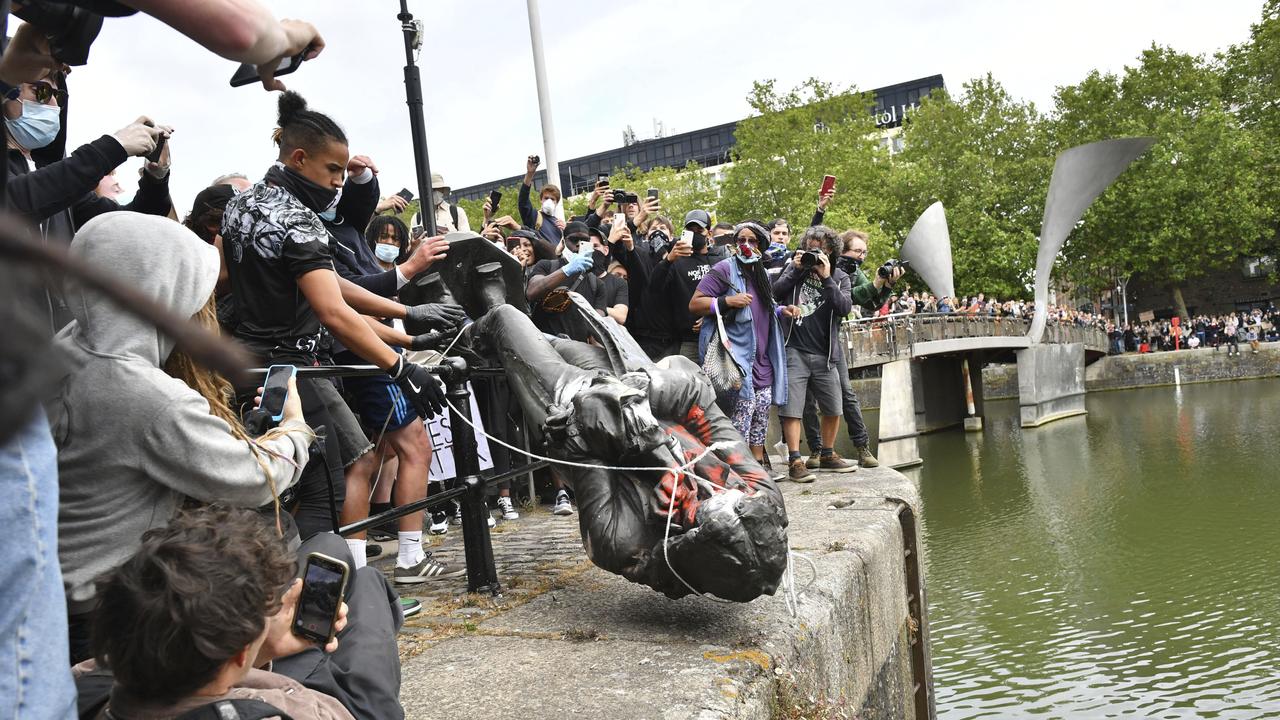
Statues across Europe continue to topple as the global Black Lives Matter and anti-racism movement gains traction.
The latest statue to come down was King Leopold II, a Belgian king who was notorious for his harsh rule over the Congo.
The statue of the king was in the Belgian city of Antwerp and had already been defaced by protesters before city officials made the decision to get rid of it.
Authorities however have claimed the statue came down for repairs and are yet to comment on if it will be re-erected.
Leopold took control of Congo in 1885 and enslaved much of its people to collect rubber, reigning over a brutal regime under which some 10 million Congolese died.
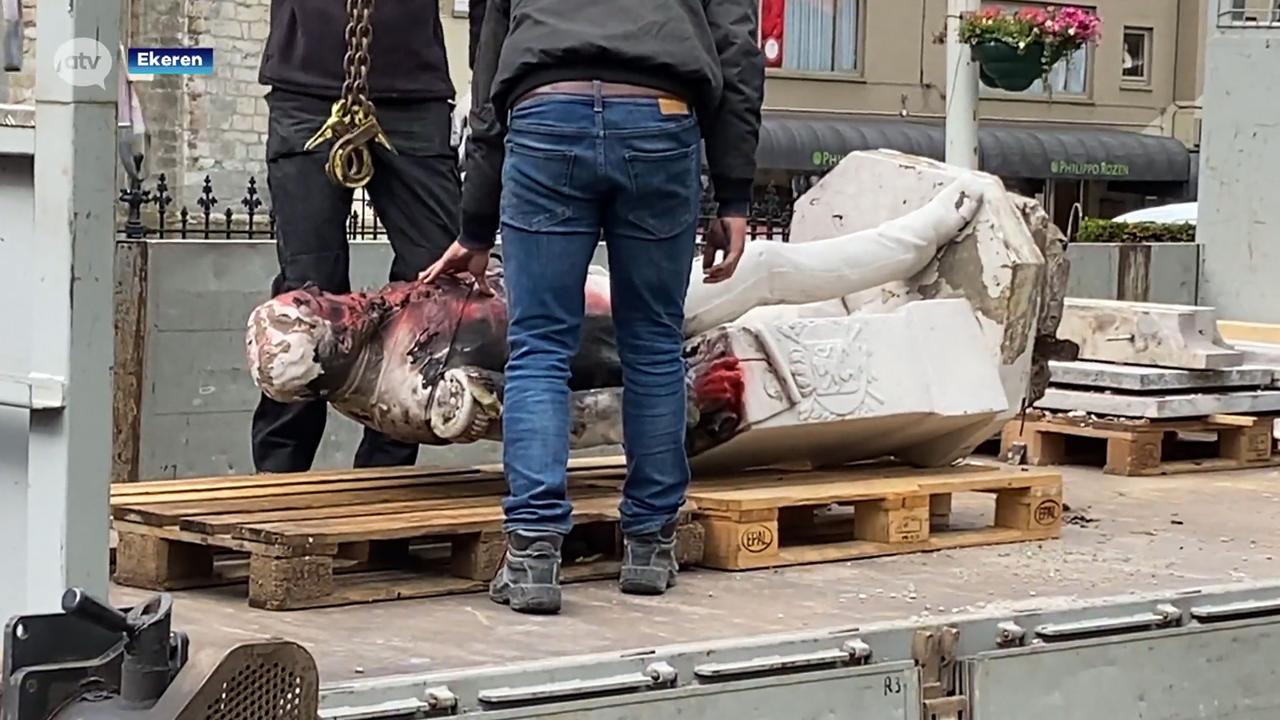

Debate continues to rage over the removal of statues across Europe, in a bid to erase parts of the continent’s colonial and racist history.
Street artist Banksy addressed the toppling of slave trader of Edward Colston in Bristol over the weekend, putting forward an idea that could keep “everyone happy”.
In his rough drawing, Banksy proposed fishing Colston out of the river and putting him back on the plinth but with a rope around his neck and some bronze statues of protesters pulling him down.
London’s mayor announced yesterday that more statues of imperialist figures could be removed from Britain’s streets after protesters knocked down the monument to Colston.
Mayor Sadiq Khan said he was setting up a commission to ensure the British capital’s monuments reflected its diversity.
It will review statues, murals, street art, street names and other memorials and consider which legacies should be celebrated, the mayor’s office said.
“It is an uncomfortable truth that our nation and city owes a large part of its wealth to its role in the slave trade and while this is reflected in our public realm, the contribution of many of our communities to life in our capital has been wilfully ignored,” Mr Khan said.
Even before the new commission got underway, officials in East London removed a statue of 18th-century merchant and slave owner Robert Milligan from its place in the city’s docklands.
Following the toppling of a statue of Colston by demonstrators on Sunday, Joe Biggs, mayor of London’s Tower Hamlets borough, said, “We’ve acted quickly to both ensure public safety and respond to the concerns of our residents, which I share.”
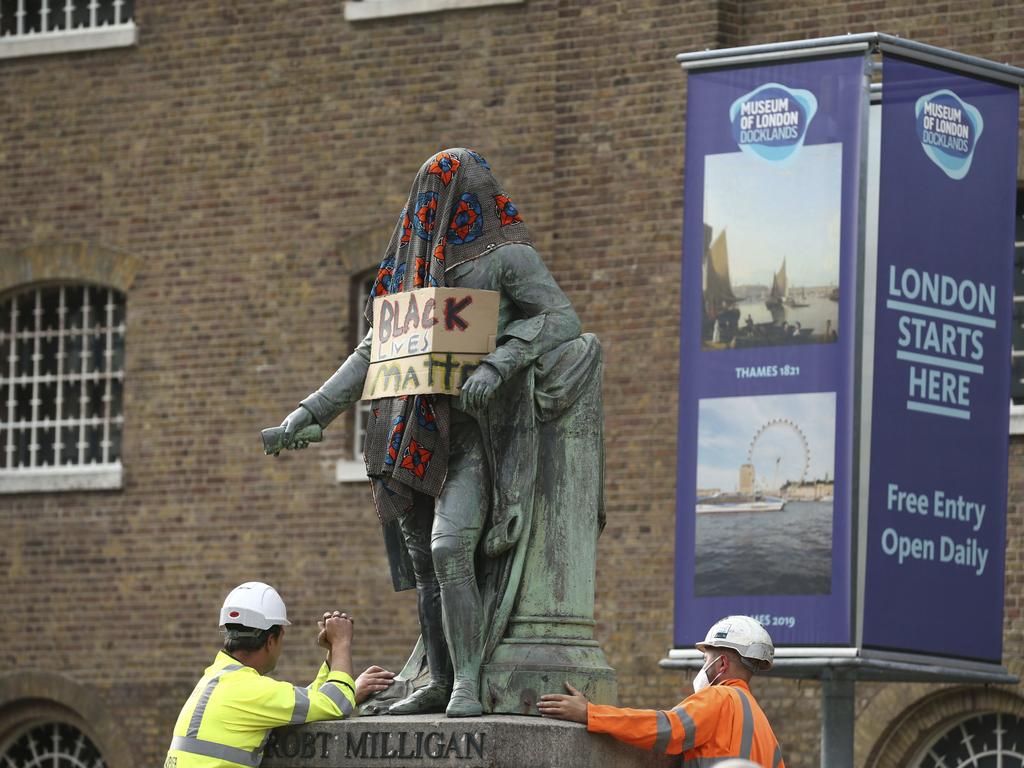
It was the latest sign that international protests of racial injustice and police violence that George Floyd’s May 25 death spurred are already creating change.
Statues, as long-lasting symbols of a society’s values, have become a focus of protest around the world.
The toppling of Colston, a 17th-century slave trader and philanthropist, was the first to go – dumped in Bristol's’s harbour.
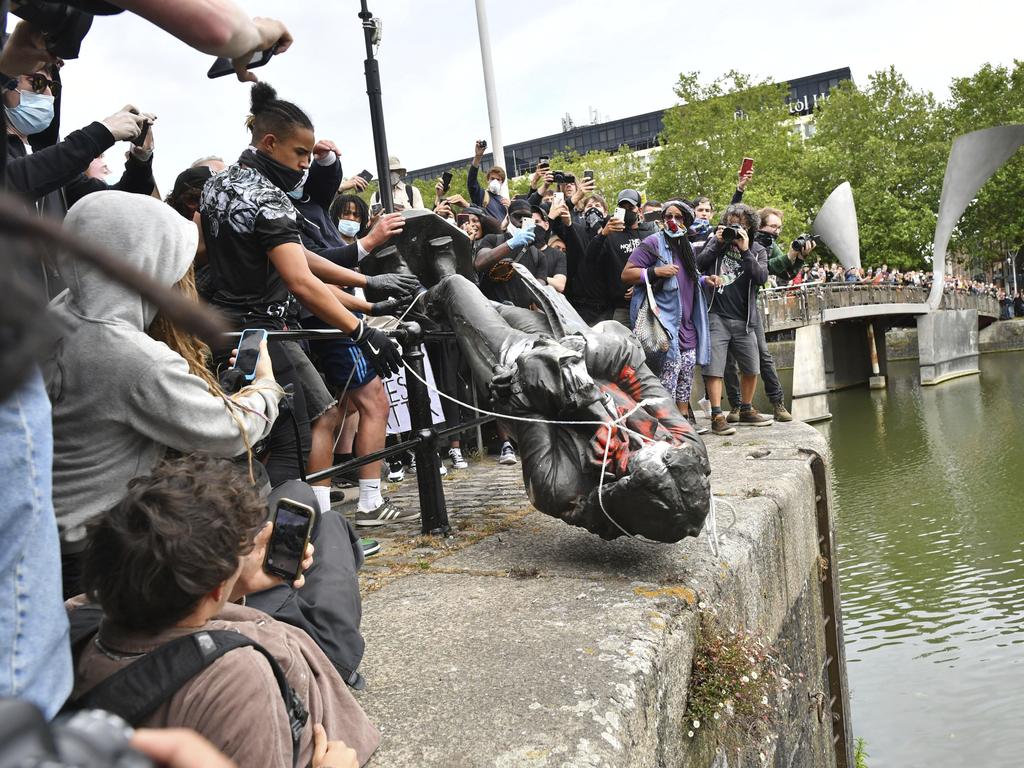
That act revived calls for Oxford University to remove a statue of Cecil Rhodes, a Victorian imperialist in southern Africa who made a fortune from mines and endowed Oxford University’s Rhodes scholarships.
Several hundred supporters of the Rhodes Must Fall group gathered near the statue at the university’s College yesterday, chanting “Take it down” before holding a silent sit-down vigil in the street to memorialise Mr Floyd.
That group has since grown to more than a thousand as Oxford city officials urged the college to apply for permission to remove the statue so that it could be placed in a museum.
Another large statue of Rhodes that had stood since 1934 was removed from South Africa’s University of Cape Town in April 2015, after a student-led campaign that also urged the university to increase its numbers of black lecturers and to make the curriculum less Eurocentric.
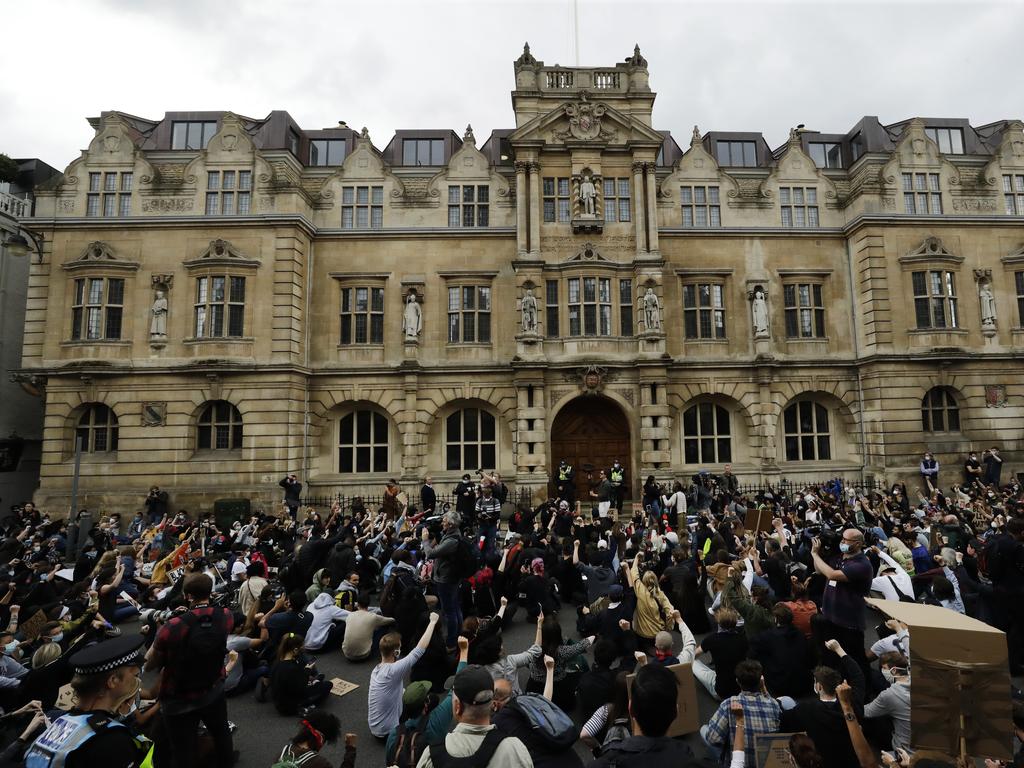
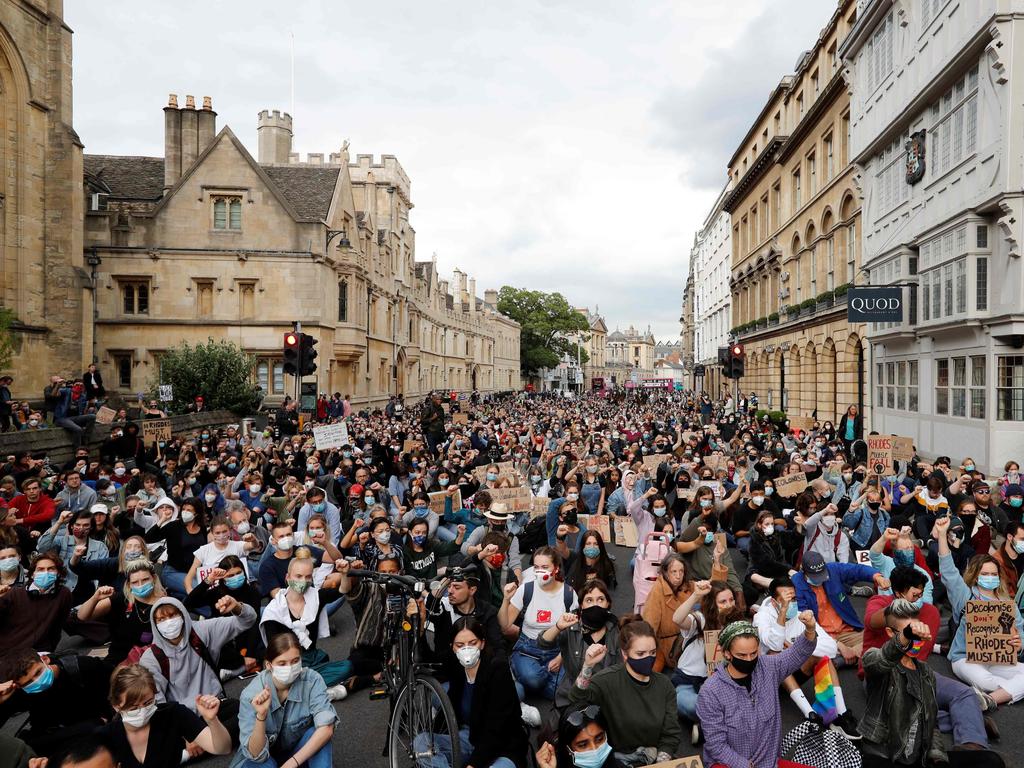
In Edinburgh, Scotland, there are calls to tear down a statue of Henry Dundas, an 18th-century politician who delayed Britain’s abolition of slavery by 15 years.
The leader of Edinburgh City Council, Adam McVey, said he would “have absolutely no sense of loss if the Dundas statue was removed and replaced with something else or left as a plinth.”
British Prime Minister Boris Johnson has acknowledged that it was “a cold reality” that people of colour in Britain experienced discrimination, but said those who attacked police or desecrated public monuments should face “the full force of the law”.
Some historical figures have complex legacies.
At weekend protests in London, demonstrators scrawled “was a racist” on a statue of Winston Churchill.
Britain’s wartime prime minister is revered as the man who led the country to victory against Nazi Germany.
But he was also a staunch defender of the British Empire and expressed racist views.
Mr Khan suggested Churchill’s statue should stay up.
“Nobody’s perfect, whether it’s Churchill, whether it’s Gandhi, whether it’s Malcolm X,” he told the BBC, adding that schools should teach children about historical figures “warts and all”.
“But there are some statues that are quite clear-cut,” Mr Khan said.
“Slavers are quite clear-cut in my view, plantation owners are quite clear-cut.”
– With Wires



